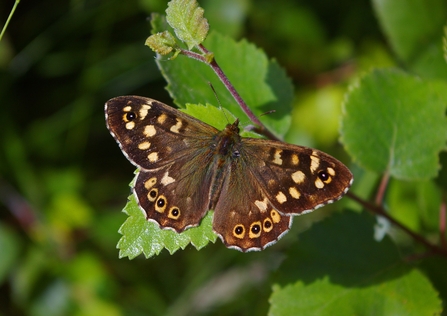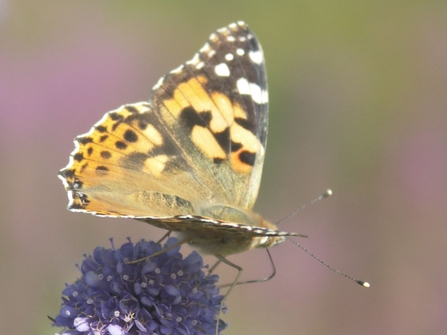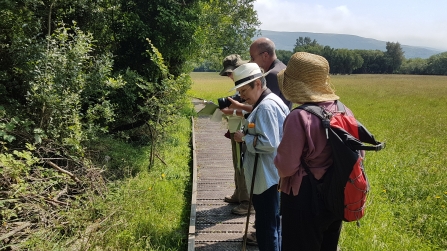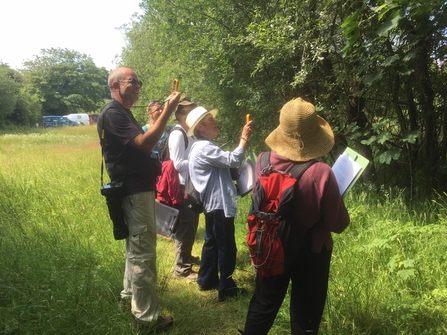Following on from our butterfly identification courses held last year as part of the citizen science work which Manx Wildlife Trust (MWT) do, a brave band of volunteers came out of lockdown and learnt about the methodology for undertaking a butterfly transect at MWT’s Close Sartfield nature reserve.
Close Sartfield Butterfly transect
Close Sartfield

Speckled wood by Neil Aldridge
Using protocol set up by the UK Butterfly Monitoring Scheme will enable us to compare our data to those in the UK. The transect at Close Sartfield was set up back in 1993 by John Lamb. The gauntlet was then picked up by Ramsey Wrigley, Val Crane and Betty Hopson. Analysis from their data quite clearly show an influx of speckled wood butterflies in 2009 and also the spikes in numbers of painted ladies in 2006, 2010 and 2014. We had a stunning year for them last year as well, with good weather supporting an early influx into the south of the UK.

A Painted Lady taken by Adam Denard
Rather than overwintering in one place like other species of butterfly, the Painted Lady keeps going, breeding and moving, breeding and moving, in a never-ending series of steps. This takes the whole population from Africa to northern Europe again, year after year. But their return trip is different...
Illustrating the importance of Citizen science and public sightings, back in 2009, from public sightings within the UK and Europe and also radar records, scientists were able to prove that Painted Ladies migrating south each autumn made the return journey at high altitude, out of view of butterfly observers on the ground. Radar records showed that Painted Ladies flew at an average altitude of over 500 metres and clocked up speeds of 30 mph by selecting favourable conditions!

Some of the butterfly transect team at Close Sartfield
The butterfly transects involve walking along a set route and counting the butterflies as you go, keeping a note of wind speed, sunshine levels and temperature. Monitoring takes place from April through to the end of September.

Some of the butterfly transect team learning how to use the anemometers to measure wind speed
The transect at Close Sartfield is recorded weekly and by sharing the work out this resulted in about 4 visits over the recording period for each person. It’s a delightful way to spend an afternoon and to really appreciate our wildlife, as well as helping us find out more about our butterflies
We are keen to establish other transects at various points around the Island. If you are interested in joining our band of butterfly transect volunteers, please email Sarah Hickey at sarah@mwt.im to find out more details!
